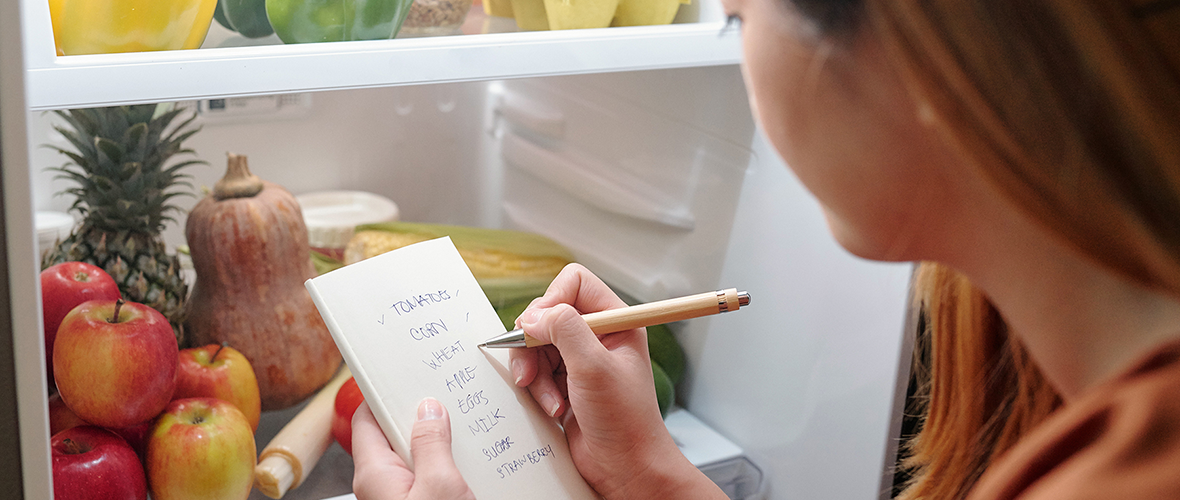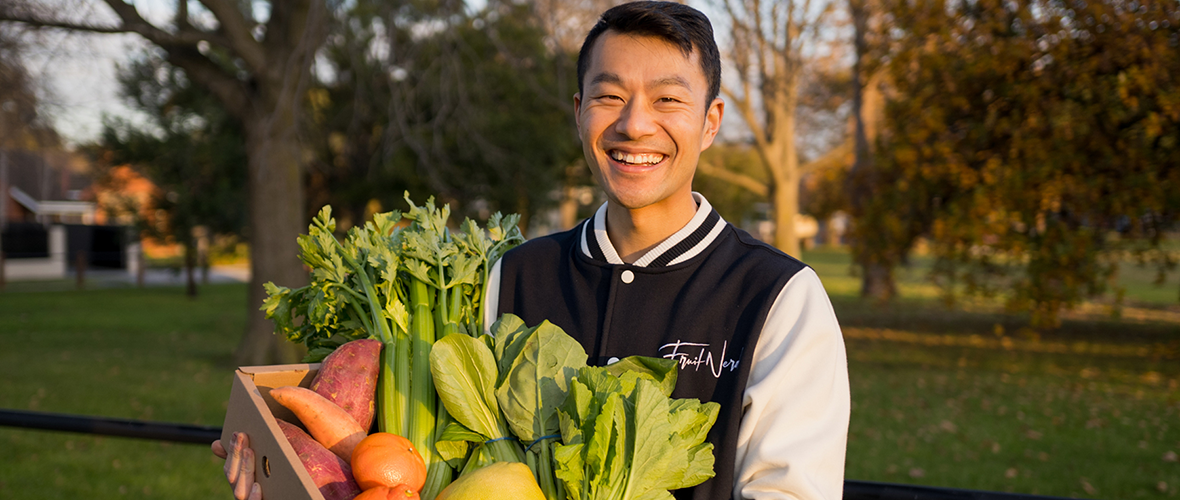.jpg?width=525&height=350&format=jpg&quality=95)
How to feed your family for less - Experts tips for shopping and cooking on a budget
To help household budgets when money is tight, we asked experts across food, finance and families to share their best tips for putting healthy food on the dinner table and in lunchboxes for less.
From genius produce swaps to savvy tips for really finding the bargain buys, here are their top tips for shopping and cooking on a budget:
1. Don’t feel pressured to always buy fresh
Even produce experts like Thanh Truong, aka the Fruit Nerd, rely on a freezer stash of frozen fruit and veg. He says green peas, corn and berries are a great convenient option for families and are often a cheaper choice.
Check out our collection of simple, healthy and budget-friendly family meals using common food pantry staples such as canned foods and frozen vegetables!
2. Eat seasonally
This simply means eating what is being harvested or in abundance right now. “You don’t need to know the seasons, just walk into the supermarket and look for the fruit and veggies that are great quality and are well stocked. They’ll be cheaper and fresher too,” says Thanh.As for the best value winter produce? As a second-generation fruiterer, Thanh recommends root vegetables like pumpkin and kumara, which get sweeter in winter, as well as mushrooms, citrus, kiwis, avocadoes, celery and brassicas like broccoli, cauliflower and Brussel sprouts. Check out our seasonal guide for more tips and recipes.
3. Meal plan with the catalogue in hand
For the Organised Housewife, Katrina Springer, easing the mental load and financial burden of grocery shopping starts with meal planning. Katrina suggests taking a moment to look through the supermarket catalogue to see what is on special for the week, then planning your meals around those sale items. “Meal planning saves me money, time and petrol! When you leave it to chance, you’ll end up buying unnecessary items. Plus, a meal plan is also a good way to ensure there’s enough food to get you through and variety to get plenty of nutrients,” says Katrina.Before writing a meal plan, Katrina also checks her pantry, fridge, and freezer for any items that need to be used. “This will help you avoid purchasing the same items or wasting food you already have,” she says.

4. Top trick to find the lowest priced groceries
Katrina says the most affordable items may not be the ones at eye level! “In the supermarket, try looking high and low to see if you can find a cheaper option,” says Katrina. “The same is true when shopping online. A good way to find the cheapest item online is to sort your results by 'lowest unit price' so that the best value items pop to the top of your list.” To spot unit prices in the supermarket look for the price per unit on the bottom corner of the price tags on the shelf.5. Learn how to stretch your food further
Foodbank CEO Brianna Casey says she is seeing a record number of Australians asking for food relief and help with basic kitchen skills. “It doesn’t have to be costly to eat nutritious food or make a meal that can feed your family and have leftovers the next day. Foodbanks across the country are providing meal kits, recipe cards and resources for food, which are really visual. This isn’t about quinoa, kale and MasterChef, but being able to make a great spag bol, or slow cooked vegetable stew. It’s about finding protein and carbs, to make sure we’re making meals that stretch further with a strong nutritious base,” says Brianna. Visit foodbank.org.au for more.
6. Shop the ‘dodgy’ bin
“There’s always going to be some produce that looks a bit sad,” says Thanh. If you’re doing a last-minute shop for tonight’s dinner, he suggests shopping discounted produce first. “While not aesthetically perfect, it’s still delicious and often interesting to cook with,” says Thanh. “Use your other senses when reviewing them, not just your eyes but smell and touch. Then Google a recipe on the spot so you can turn that soft eggplant into a quick veggie pasta bake.”7. Cook once, eat twice
Limit your time in the kitchen and avoid wasting leftovers by cooking once but eating two or even three times. Katrina likes roasting some vegetables to have tonight, then using them to top a pizza the next night or mixed with pasta and your favourite sauce the following.
8. Diversify your fruit and veg
We humans are creatures of habit, which often means buying the same fruit and veg because we always have, but Thanh suggests that autopilot shopping means we are missing out. “Whether apples, mandarins, kumara, or brassicas, rotate the types of produce you eat. Diversifying is not only better for your nutrition but your tastebuds too. It also means you can shop what’s in season without getting bored,” says Thanh.
If you always opt for kumara, Thanh suggests trying purple sweet potato, taro, or parsnip. If imperial mandarins are a go-to for lunchboxes, try tangold mandarins. As for swapping broccoli? Go for cauliflower, Brussel sprouts, or Chinese broccoli. “Mustard greens are also my secret ingredient for an amazing veggie soup,” he adds.

9. Practice ‘Meat-free Monday’
An easy way to make meals more affordable is to rely on legumes and grains over meat, says Katrina. “We’ve love meat-free Monday in our house and some of our favourites are Quinoa and Zucchini Fritters, Ricotta Gnocchi with Eggplant Sauce and bowl of Roast Vegetables. All are budget friendly and nutritious, as well as delicious.” Click here for more cheap and delicious vegetarian meals.10. Don’t go hungry
If pressures are getting too tight to put enough food on the table, or you find yourself skipping meals, don’t hesitate to get help. “The most heart-breaking scenarios for us at Foodbank is hearing people have been going hungry for days or even weeks and there is support out there,” says Brianna. She suggests heading to the Aotearoa Food Rescue Alliance AFRA.
The latest nutrition advice, plus health and wellness tips delivered to your inbox monthly
